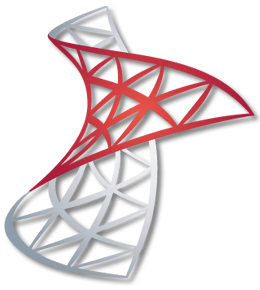Snowflake vs SQL Server
A detailed comparison
Compare Snowflake and SQL Server for time series and OLAP workloads
Learn About Time Series DatabasesChoosing the right database is a critical choice when building any software application. All databases have different strengths and weaknesses when it comes to performance, so deciding which database has the most benefits and the most minor downsides for your specific use case and data model is an important decision. Below you will find an overview of the key concepts, architecture, features, use cases, and pricing models of Snowflake and SQL Server so you can quickly see how they compare against each other.
The primary purpose of this article is to compare how Snowflake and SQL Server perform for workloads involving time series data, not for all possible use cases. Time series data typically presents a unique challenge in terms of database performance. This is due to the high volume of data being written and the query patterns to access that data. This article doesn’t intend to make the case for which database is better; it simply provides an overview of each database so you can make an informed decision.
Snowflake vs SQL Server Breakdown
 |
 |
|
| Database Model | Cloud data warehouse |
Relational database |
| Architecture | Snowflake can be deployed across multiple cloud providers, including AWS, Azure, and Google Cloud |
SQL Server can be deployed on-premises, in virtual machines, or as a managed cloud service (Azure SQL Database) on Microsoft Azure. It is available in multiple editions tailored to different use cases, such as Express, Standard, and Enterprise. |
| License | Closed source |
Closed source |
| Use Cases | Big data analytics, Data warehousing, Data engineering, Data sharing, Machine learning |
Transaction processing, business intelligence, data warehousing, analytics, web applications, enterprise applications |
| Scalability | Highly scalable with multi-cluster shared data architecture, automatic scaling, and performance isolation |
Supports vertical and horizontal scaling, with features like partitioning, sharding, and replication for distributed environments |
Looking for the most efficient way to get started?
Whether you are looking for cost savings, lower management overhead, or open source, InfluxDB can help.
Snowflake Overview
Snowflake is a cloud-based data warehousing platform that was founded in 2012 and officially launched in 2014. It is designed to enable organizations to efficiently store, process, and analyze large volumes of structured and semi-structured data. Snowflake’s unique architecture separates storage, compute, and cloud services, allowing users to independently scale and optimize each component.
SQL Server Overview
Microsoft SQL Server is a powerful and widely used relational database management system developed by Microsoft. Initially released in 1989, it has evolved over the years to become one of the most popular database systems for businesses of all sizes. SQL Server is known for its robust performance, security, and ease of use. It supports a variety of platforms, including Windows, Linux, and containers, providing flexibility for different deployment scenarios.
Snowflake for Time Series Data
While Snowflake is not specifically designed for time series data, it can still effectively store, process, and analyze such data due to its scalable and flexible architecture. Snowflake’s columnar storage format, combined with its powerful query engine and support for SQL, makes it a suitable option for time series data analysis.
SQL Server for Time Series Data
While Microsoft SQL Server is primarily a relational database, it does offer support for time series data through various features and optimizations. Temporal tables allow for tracking changes in data over time, providing an efficient way to store and query historical data. Indexing and partitioning can be leveraged to optimize time series data storage and retrieval. However, SQL Server may not be the best choice for applications requiring high write or query throughput specifically for time series data, as specialized time series databases offer more optimized solutions as well as a variety of developer productivity features that speed up development time for applications that heavily use time series data.
Snowflake Key Concepts
- Virtual Warehouse: A compute resource in Snowflake that processes queries and performs data loading and unloading. Virtual Warehouses can be independently scaled up or down based on demand.
- Micro-Partition: A storage unit in Snowflake that contains a subset of the data in a table. Micro-partitions are automatically optimized for efficient querying.
- Time Travel: A feature in Snowflake that allows users to query historical data at specific points in time or within a specific time range.
- Data Sharing: The ability to securely share data between Snowflake accounts, without the need to copy or transfer the data.
SQL Server Key Concepts
- T-SQL: Transact-SQL, an extension of SQL that adds procedural programming elements, such as loops, conditional statements, and error handling, to the standard SQL language.
- SSMS: SQL Server Management Studio, an integrated environment for managing SQL Server instances, databases, and objects.
- Always On: A suite of high availability and disaster recovery features in SQL Server, including Always On Availability Groups and Always On Failover Cluster Instances.
Snowflake Architecture
Snowflake’s architecture separates storage, compute, and cloud services, allowing users to scale and optimize each component independently. The platform uses a columnar storage format and supports ANSI SQL for querying and data manipulation. Snowflake is built on top of AWS, Azure, and GCP, providing a fully managed, elastic, and secure data warehouse solution. Key components of the Snowflake architecture include databases, tables, virtual warehouses, and micro-partitions.
SQL Server Architecture
Microsoft SQL Server is a relational database that uses SQL for querying and manipulating data. It follows a client-server architecture, with the database server hosting the data and processing requests from clients. SQL Server supports both on-premises and cloud-based deployment through Azure SQL Database, a managed service offering in the Microsoft Azure cloud. SQL Server’s architecture includes components such as the Database Engine, which processes data storage and retrieval, and various services for reporting, integration, and analysis.
Free Time-Series Database Guide
Get a comprehensive review of alternatives and critical requirements for selecting yours.
Snowflake Features
Elasticity
Snowflake’s architecture allows for independent scaling of storage and compute resources, enabling users to quickly adjust to changing workloads and demands.
Fully Managed
Snowflake is a fully managed service, eliminating the need for users to manage infrastructure, software updates, or backups.
Security
Snowflake provides comprehensive security features, including encryption at rest and in transit, multi-factor authentication, and fine-grained access control.
Data Sharing
Snowflake enables secure data sharing between accounts without the need to copy or transfer data.
SQL Server Features
Security
SQL Server offers advanced security features, such as Transparent Data Encryption, Always Encrypted, and row-level security, to protect sensitive data.
Scalability
SQL Server supports scaling out through features like replication, distributed partitioned views, and Always On Availability Groups.
Integration Services
SQL Server Integration Services (SSIS) is a powerful platform for building high-performance data integration and transformation solutions.
Snowflake Use Cases
Data Warehousing
Snowflake provides a scalable, secure, and fully managed data warehousing solution, making it suitable for organizations that need to store, process, and analyze large volumes of structured and semi-structured data.
Data Lake
Snowflake can serve as a data lake for ingesting and storing large volumes of raw, unprocessed data, which can be later transformed and analyzed as needed.
Data Integration and ETL
Snowflake’s support for SQL and various data loading and unloading options makes it a good choice for data integration and ETL
SQL Server Use Cases
Enterprise Applications
SQL Server is commonly used as the backend database for enterprise applications, providing a reliable and secure data storage solution.
Data Warehousing and Business Intelligence
SQL Server’s built-in analytical features, such as Analysis Services and Reporting Services, make it suitable for data warehousing and business intelligence applications.
E-commerce Platforms
SQL Server’s performance and scalability features enable it to support the demanding workloads of e-commerce platforms, handling high volumes of transactions and user data.
Snowflake Pricing Model
Snowflake offers a pay-as-you-go pricing model, with separate charges for storage and compute resources. Storage is billed on a per-terabyte, per-month basis, while compute resources are billed based on usage, measured in Snowflake Credits. Snowflake offers various editions, including Standard, Enterprise, Business Critical, and Virtual Private Snowflake, each with different features and pricing options. Users can also opt for on-demand or pre-purchased, discounted Snowflake Credits.
SQL Server Pricing Model
Microsoft SQL Server offers a variety of licensing options, including per-core, server + CAL (Client Access License), and subscription-based models for cloud deployments. Costs depend on factors such as the edition (Standard, Enterprise, or Developer), the number of cores, and the required features. For cloud-based deployments, Azure SQL Database offers a pay-as-you-go model with various service tiers to accommodate different performance and resource requirements.
Get started with InfluxDB for free
InfluxDB Cloud is the fastest way to start storing and analyzing your time series data.
